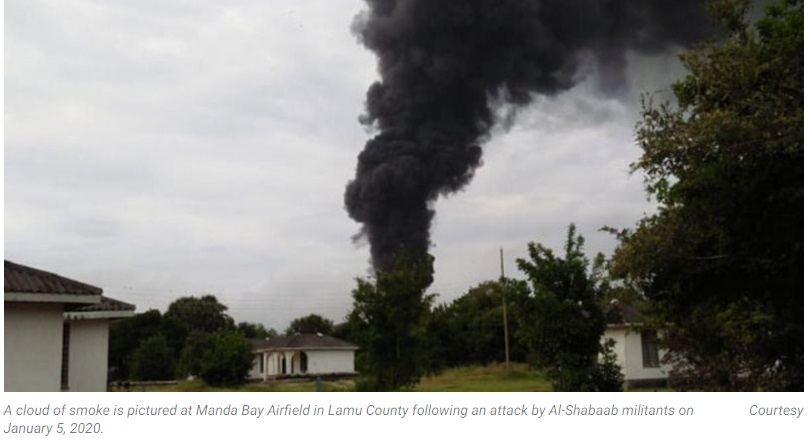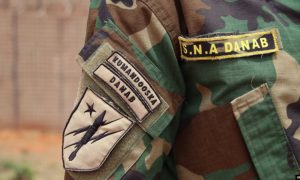
From late last year, Somalia’s President Hassan Sheikh Mahmoud has been waging an ‘all-out’ war against the al-Shabaab to end his country’s 15-year Islamist insurgency. For almost a decade, al-Shabaab has waged a ‘low intensity terrorism’ based on guerilla tactics to gain control of Kenyan Muslim enclaves and counties bordering Somalia — Garissa, Lamu, Mandera and Wajir.
Silently but subtly, the group’s recruitment strategies have ‘Kenyanised’ the face of terrorism, firmly turned violent extremism into Kenya’s domestic problem and transformed the country into the largest source of al-Shabaab’s foreign fighters now involved in all theatres of war across Eastern Africa. If al-Shabaab’s fleeing fighters sneak into Kenya, they will swell the ranks of local extremists with the risk of the country becoming an epicentre of Islamic insurgency.
Only six decades ago, Kenya was “the face of international terrorism”. Reading through Caroline Elkins’ famous tome, Britain’s Gulag: The Brutal End of Empire in Kenya (2005), British colonial authorities saw the Mau Mau armed insurgency (1952–1962) as a descent into savagery and its fighters as “the face of international terrorism in the 1950s”.
In the Cold War geopolitics, the West invested in a systematic ‘deradicalisation strategy’ in the 1960s that moved Kenya away from militancy into a virulently pro-West country.
Until the rise of al-Shabaab in 2005, Kenya was considered a ‘soft target’ country for Islamic terrorism. Bringing home Kenya’s vulnerability as a ‘soft target’ was the revenge bombing of the Norfolk hotel in Nairobi by pro-Palestinian militants on December 31, 1980. Not less than 20 people were killed and 87 others wounded in the revenge attack for Kenya’s support for Israel’s ‘Entebbe raid’. On August 7, 1998, the Egyptian Islamic Jihad bombed American embassies in Nairobi and Dar-es-Salaam. Not less than 224 people, mainly Kenyans, died and 4,085 others were injured in an attack that became the curtain-raiser for Kenya as al-Qaeda’s ‘soft target’ in the Horn.
Failed missile attack
At the dawn of the new millennium, al-Qaeda recruited Fazul Abdullah Mohammed, a Comorian-Kenyan, as the leader of its operations in East Africa. Fazul masterminded the failed missile attack on a passenger airliner owned by the Israel-based Arkia Airlines as it took off from the Moi International Airport, Mombasa and the simultaneous attack on the Kikambala Hotel in Mombasa that killed 13 people and injured 80 others on November 28, 2002.
With the rise of al-Shabaab, Somalia became an epicentre of violent extremism and Kenya a ‘spill over’ country. The group resorted to kidnappings on Kenyan soil to finance its operations. Kidnappings imperiled Kenya’s multimillion-dollar tourism industry.
The Kenya Defence Forces (KDF) responded by entering Somalia in October 2011 in pursuit of the al-Shabaab jihadi insurgents. In June 2012, Kenyan troops were absorbed into the African Mission in Somalia (AMISOM).
The group’s attack on the Westgate Shopping Mall in Nairobi in September 2013 launched al-Shabaab’s retaliatory attacks inside Kenya. After the attack, which killed 67 people and injured over 150 others, security crackdowns forced al-Shabaab on the run.
But the group resorted to ‘low intensity terrorism’ based on guerrilla tactics calibrated to turn counties along the 681km Kenya-Somalia border —Mandera, Wajir, Garissa and Lamu — into its fortress. Exploiting pan-Somali and pan-Islamic ethno-nationalisms, the group recruited locals as its foot soldiers.
As such, two of its Kenyan members—Mohamed Ali Abikar and Hassan Aden Hassan — and a Tanzanian, Rashid Charles Mberesero, were behind the deadly attack on Garissa University College where at least 48 people died and around 200 others injured on April 2, 2015. Al-Shabab’s local agents aided its attacks in Lamu’s Mpeketoni area where more than 60 people died and hundreds were wounded in the June 15-17, 2014 attack.
Since 2014, it has stationed its Jaysh Ayman cell in Boni Forest, Lamu County, from where it has attacked villages, security forces and slowed down investments and progress in the Lapsset corridor. The cell attacked the American base in Manda Bay in January 2020.
Ungovernable safe haven
Of the 86 terror-related incidents in Kenya, 37 took place in Mandera, 21 in Lamu, 19 in Garissa and nine in Wajir counties. Nearly 50 per cent of the attacks targeted security officials to make the area an ungovernable safe haven for terrorists.
Al-Shabaab’s ‘low intensity terrorism’ strategy is transforming Kenya into an epicentre of Islamic insurgency in three ways.
First, al-Shabaab has localised the problem of terrorism, increasingly turning it into Kenya’s domestic challenge. Its local recruitment strategy has changed the face of its fighters. Five Kenyans were involved in al-Shabaab’s attack on the DusitD2 complex at 14 Riverside Drive junction that killed 21 people and injured several others on January 15, 2019.
Ali Salim Gichunge, born in Isiolo in 1995, was the organiser and coordinator of the operation; his wife, Violet Wanjiru, ran the safe house from where the attack was planned; and a third Kenyan national, Osman Ibrahim Gedi, was Gichunge’s comrade-in-arms.
A fourth Kenyan, Mombasa-born Mahir Khalid Riziki, detonated a suicide bomb at Dusit and Siyat Omar Abdi, a Somali born in Kenya’s Dadaab refugee complex in 1992, was among the gunmen who stormed the hotel.
In April 2019, a Kenyan driver, Issac lbrein Elbow, was a co-conspirator in the kidnapping of two Cuban doctors by al-Shabaab gunmen in Mandera.
Second, Kenya has become the largest source of al-Shabaab’s foreign fighters. Al-Shabaab has turned to recruiting fighters from Kenya, Tanzania, Uganda and Ethiopia as its preferred alternative to Western fights. Among these is 29-year-old Abdirizak Muktar Garad, a Kenyan from Wajir County involved in the bombing of a church in North Kivu, in January 2023.
Earlier on, in January 2022, another Kenyan, Salim Rashid Mohamed aka Chotara, was arrested in DRC for his role in a network of terrorists from across East Africa.
Terror suspects with Kenyan roots joined the Isis-linked Ansar al Sunnah group behind the Cabo Delgado insurgency in Mozambique.
In March 2021, two terror suspects from Mombasa were arraigned for their role in Mozambique. After the Mozambican retook lost territory in Cabo Delgado, Kenyan fighters have fled, posing a threat of terrorist attacks within Kenya.
Third, following Somalia’s success in cutting al-Shabaab’s economic lifeline, the group has resorted to high-profile kidnappings inside Kenya as a source of finance, including two Cuban doctors inside Kenya in 2019.
With violent extremism a ‘home-grown’ problem, Kenya now must engage local communities to counter al-Shabaab, reintegrate returnees and al-Shabaab defectors.
________________________________________________________
Sources: Nation
Prof Peter Kagwanja is co-editor of the book,War for Peace: Kenya’s Military in the African Mission in Somalia, 2012-2020 . (Nairobi: Kenya Defence Forces, May 2020).
_____________________________________________________________________________________Xafiiska Wararka Qaranimo Online | Mogadishu, Somalia
_____________________________________________________________________________________Advertisement
_____________________________________________________________________________________







